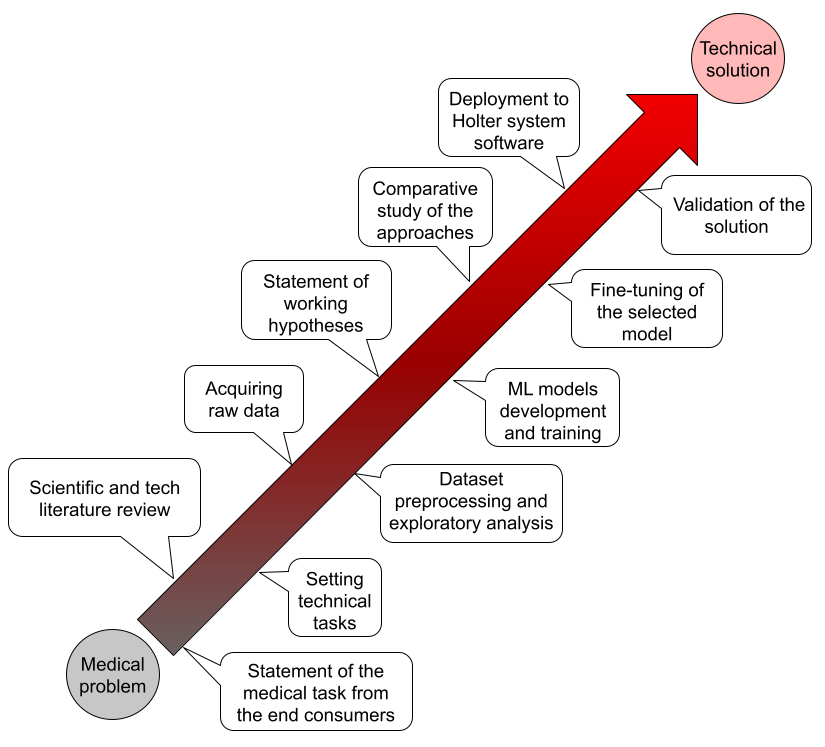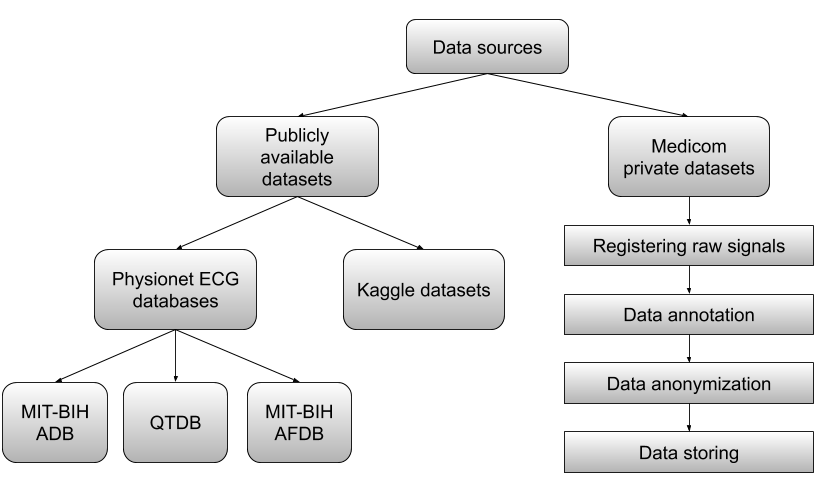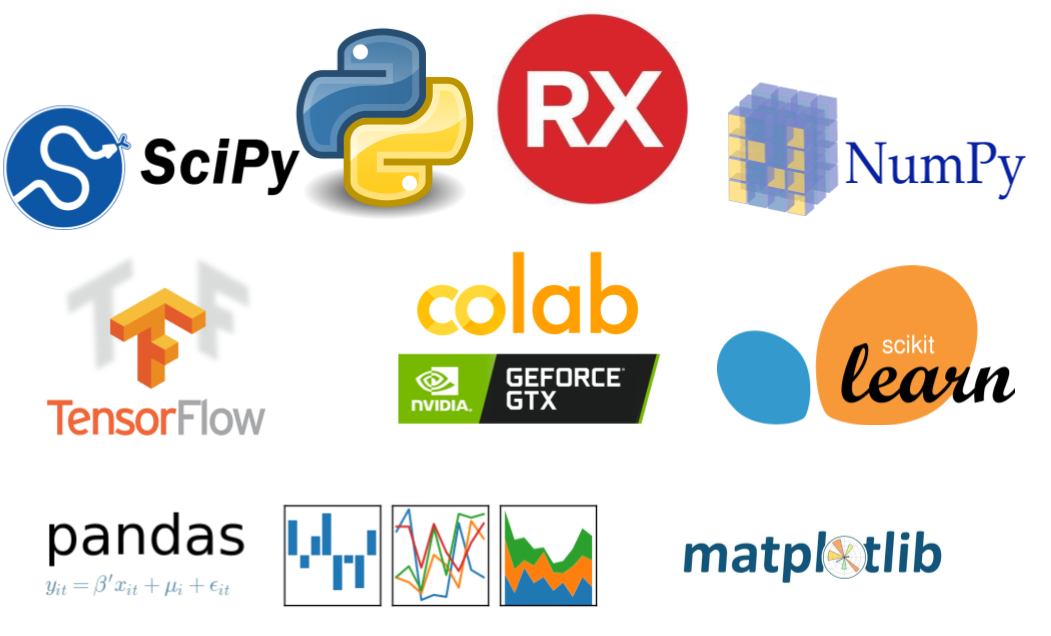- Who are we?
Medicom Research Laboratory was founded in 2018 and since then is involved in research and development of Machine Learning approaches for ECG analysis. The Research Laboratory includes members of The IEEE Engineering in Medicine and Biology Society, data scientists, programmers, and medical co-executors. The main goal of this Medicom department is to provide innovative and effective algorithmic solutions to medical problems. The scope of tasks is shown below in the Figure 1.

Figure 1. From medical problem to technical solution — the scope of tasks solved at the Medicom Research Laboratory
- Why do we use ML?
According to Frost & Sullivan, the market of AI in medicine is growing by 40% per year and will reach turnover of $ 6.6 billion by 2021. Machine learning (ML) is dramatically changing all areas of medicine: improve diagnostic capabilities, facilitate the work of radiologists and pathologists, make more effective prediction of diseases. Taking into account impressive achievements of ML and deep learning (DL) in diverse walks of life, it is getting evident that this field of science is playing a major role in the World and it is crucial to join in. Moreover, ML approaches have proved their efficiency in pattern recognition, signal processing and ECG interpretation. Hence, we are solving the emerging problems, discovered by our customers and medical co-executors, by means of state-of-the-art methods.
- How do we solve problems?
Everything starts with customer research. The main goal on this stage is to discover and formulate the relevant medical issue. The next step is to assess the solution of the problem in world practice. Here we dive into the depth of scientific resources to get the inspiration for addressing the problem. Then we set technical tasks, the solutions of which will help to achieve the main goal. Since we utilize data-driven approaches, data acquisition is an important step. We use both publicly available datasets and data collected by our medical co-executors (Figure 2). After data is preprocessed and analyzed, we move on to the hypotheses statement and ML model creation. Careful assessment of selected approaches helps us to figure out the appropriate solution to the initial problem. Since the Medicom Holter system software is created in C++, deployment of the trained model requires programming language conversion with thorough optimization of computing resources: the algorithm should be executed efficiently on standard CPU due to the lack of computers with GPU in clinics. Once the validation of the deployed solution is carried out, it can be widely applied in medical practice.

Figure 2. Data sources that we use in our work
- What kind of technological stack do we use?
We use Python programming language for rapid prototyping, convenient data management, and effective ML model training. In our research we actively use ML packages, DL frameworks, data management libraries (Figure 3). High-loaded training of models is performed on both local GPU-supplied machines and free cloud platforms. The final solution is deployed into Holter system software written in C++ by means of Embarcadero Rad Studio.

Figure 3. Technological stack that we use in R&D
- What about results?
Since 2018 we have started and completed the following projects:
> Comparative study of NN-based approaches for QRS Segmentation;
> Research and development of machine learning-based approach for atrial fibrillation detection;
> ECG signal denoising and compression with autoencoder (in progress);
> QRS classification and clustering by means of classical machine learning algorithms (in progress).
To get more information about each project, please visit the appropriate section on the site.
